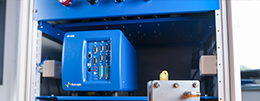SECM without the S
SI-SECM, or Surface Interrogation SECM, is a dc-SECM technique that can be used as a single point measurement to quantify species adsorbed at a substrate. It is particularly useful for catalysis st...
Energy storage and conversionAnalytical electrochemistryResearch electrochemistry





